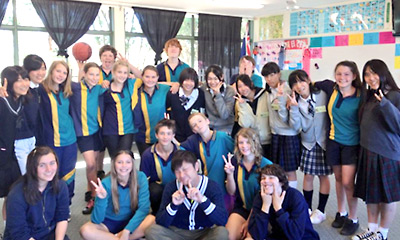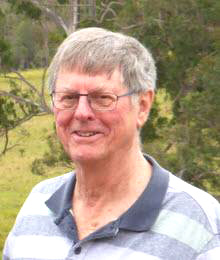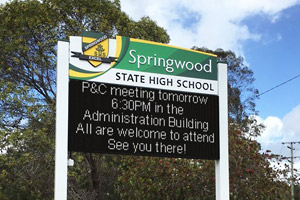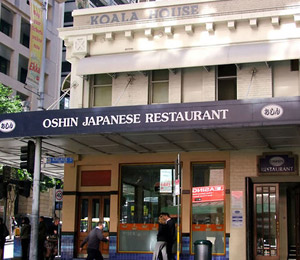| 研究会の概要 | 役員 | 会長挨拶 | 日本青少年海外研修研究会のあゆみ |
| 素晴らしい経験と英語教師としての成長と | FEV Homestay Program | 事務局 |
研究会の概要
名称:日本青少年海外研修研究会
(英語名:Japan Council for Educational Visits of Youth)
1976年に設立の現職教員及び教員経験者による40年以上の歴史ある研究会です。青少年の内面生活を豊かにし、教養、文化活動を進化、発展させる契機となるように、青少年に海外調査、研究の良き場と機会を提供することを目的として設立されました。
具体的な活動として、青少年のための海外研修プログラム(Foreign Educational Visit:略称FEV)の企画、運営、調査研究活動を行なっています。
役員
| 名誉会長 | 横瀬 弘幸(筑波学院大学名誉教授) |
|---|---|
| 会長 | 渡辺 康洋(富山大学名誉教授) |
| 事務局長 | 都井 建一(つくば秀英高等学校教諭) |
| 理事 | 篠田 康人 、 新海 幸平 、 江藤 照美 、 中條 純子 、 太田原 由奈 、 森田 一洋 |
会長挨拶
海外研修旅行の歴史とともに
日本青少年海外研修研究会がスタートした昭和50年代、海外ホームステイは中高生には尚早であると考えられていました。海外旅行者数が現在の十分の一、中国への観光旅行は許可されていなかった時代です。中高生の未成熟な学習能力、未確立の自我は海外体験から得られる価値をまだ十分に消化できないという見方が支配的でした。しかし私たちは、感受性豊かな十代の若者ゆえに得られる体験や、知識、情感の豊かさがもたらす可能性を主張し、彼らの力を信じました。
以来40年以上、私たちは若い人たちが少しでもその力を発揮することができる海外研修旅行の在り方を研究し、設計してきました。毎年毎年、体験を終えてはつらつと帰国する多くの生徒さんたちを見て私たちの信念は正しかったと確信します。
海外旅行が一生に一度だった時代は去り、今や若者たちは国際的に行動しなければならない場面にいくつも遭遇します。それらに積極的に臨み、異文化、異人種とのコミュニケーションにものおじすることのない人材にならねばなりません。
日本青少年海外研修研究会は生徒の姿を常に間近で見ている教員たちで構成されています。身近な存在ゆえに共感することもでき、時には厳しさをもって導くこともできます。十代のうちに海外に触れることが生徒本人の成長だけでなく、日本社会にも大きなプラスをもたらす。この信念に基づき、私たちはこれからも若い生徒達にとって有意義で楽しく、安全で国際社会に貢献する研修旅行プログラムを作り続けていく所存です。
日本青少年海外研修研究会(JCE)
会長 渡辺康洋
日本青少年海外研修研究会のあゆみ
- 1976年
9月10日 JCE発会式「青少年海外研修研究会」Japan Council for Educational Visits of Youth
青少年の海外研修のあるべき方向を研究。初代会長は飯田芳郎 元文部省主任視学官
- 1977年
第1回研究発表会
第1回事例研究発表会
第1回ホームステイ FEVプログラムを実施(参加者 277名)
第1回参加リーダー反省会
第1回「FEV参加者の集い」開催
- 1978年
事務局会議にて月例会設定
運営委員制度発足
JCE奨学生をサンフランシスコへ2名派遣
第1回冬休みプログラムを実施
- 1979年
JCEニュース創刊号発行
参加生徒用ハンドブック「Handbook of Foreign Life」発刊
引率者用ハンドブック「グループリーダーマニュアル」発刊
第4回FEVプログラムにて初めてのJCE独自開発コミュニティーをカナダ・バンクーバーに置く
- 1981年
ホームステイ参加者感想文を「カリフォルニアレポート」として編集発刊
第1回ハワイ プログラムを実施
- 1982年
ホームステイ英会話集「Homestay Language Help」発刊
第1回オーストラリア プログラムを実施(参加者 14名)
- 1984年
第1回ニュージーランド プログラムを実施
- 1985年
JCEとして第1回外国人学生受け入れを実施(オーストラリアより20名)
- 1986年
JCE創立10周年記念式典開催
日本受入プログラム参加外国人生徒に対する奨学金制度開始
- 1988年
オーストラリア受入校の担当教員を招待し、東京にて受入校会議を開催(以降、隔年で京都、横浜、川越などで開催)
- 1989年
オーストラリアにて日本語教育促進のため「第1回日本語エッセイコンテスト」を主催、実施する。
初回にも関わらず200点以上の応募をみる。以降毎年実施。日本旅行業協会制定の「ホームステイ旅行運営ガイドライン」の策定にあたりJCEの資料を提供
- 1990年
オーストラリア・ブリスベン市にて、同市日本総領事館主催、クイーンズランド州教育省後援の「日本語弁論大会」に協賛
- 1992年
JCEテーマ研究会実施(テーマ:受入学校への日本語教育面での貢献、中学生のホームステイの諸問題など)
現地受入担当教員用マニュアル「Teacher’s Handbook」を発刊
「事前学習会運営マニュアル」発刊
- 1994年
引率者用資料「トラブル対応事例集」発刊
「日本青少年海外研修研究会」と改称
- 1995年
会長に伊豆山健夫 東京大学名誉教授
第1回春休みプログラムを実施(オーストラリア・メルボルン)
- 1996年
JCE発足20周年を迎える
- 1997年
FEVプログラム20周年を迎える
JCE20周年記念講演会開催
- 1998年
第1回カナダ プログラムを実施(参加者 28名)
- 2000年
第1回イギリス プログラムを実施
- 2002年
第1回スイス プログラムを実施(インターナショナルスクールでのプログラム/寮滞在)
- 2004年
第1回冬休みプログラムを実施(アメリカ・ロサンゼルス/英語研修+アクティビティプログラム)
- 2006年
会長に坂東眞理子 昭和女子大学学長、元ブリスベン総領事
- 2008年
株式会社ユナイテッドツアーズ ACOSTA海外留学情報センターへFEVプログラム業務委託
- 2009年
会長に東後勝明 早稲田大学名誉教授
- 2011年
第1回小学生プログラムを実施(オーストラリア・パース/参加者 4名)
- 2013年
会長に横瀬弘幸 筑波学院大学名誉教授
- 2014年
販売拡大のため近畿日本ツーリスト営業担当者向けのプログラム視察ツアーを実施(参加者 7名)
- 2016年
JCE発足40周年を迎える
- 2017年
FEVプログラム40周年を迎える
JCE40周年記念講演会開催
- 2020年
会長に渡辺 康洋 桜美林大学教授/富山大学名誉教授
- 2024年
全国語学教育学会 JALT(The Japan Association for Language Teaching)第50回年次国際大会口頭発表
素晴らしい経験と英語教師としての成長と 〜子どもたちの笑顔、オーストラリア・カナダの方々のホスピタリティーに触れながら〜
日本青少年海外研修研究会
事務局長 都井 建一
私がこのプログラムに携わるようになったのは、横瀬会長との出会いがきっかけです。2011年初め、私は、職場の後輩たちを引き連れ、筑波学院大学を訪れました。学生たちにユーモアたっぷりの語り口で分かりやすい講義をする横瀬教授の授業を見学させていただいたのです。帰り際、横瀬先生が声をかけてくれました。「英語の教師として、成長してくためにも、この夏、オーストラリアに行ってみませんか?」と。私は、「経験も力もありませんから、できないと思うのですが…」と、その場で応えてしまいました。すると、「何を言うのですか。教員は人間性が大事なのですよ。あなたと初めてお会いしましたが、あなたの人間性は、国際交流の活動にピッタリですよ。ぜひやってみてください」。横瀬先生が情熱たっぷりに、背中を押してくださったのです。そのれが、FEVプログラムとの、そして、日本青少年海外研修研究会での活動にのめり込むきっかけです。
2011年夏、期待と不安を抱きながら、私は、初めてFEVのグループリーダー(GL)として全国各地から応募のあった中高生を引率してオーストラリアに行きました。オーストラリア滞在中、参加した子どもたちの笑顔に触れるたびに、オーストラリアの方々のホスピタリティーに触れるたびに、不安は消え、喜びや充実感に変わっていきました。英語の教師をやっていてこんなに嬉しいことはないと、しみじみ思いましたし、自信が持てるようになったと振り返っています。その証拠になる原稿が出てきましたので、掲載させていただきます。これは、2012年夏のFEVパンフレットに掲載していただいた原稿です。
私は、昨年8月に中学1年生から高校3年生のグループリーダーとして、ゴールドコーストに滞在しました。「初めての海外が、このプログラム」という生徒いましたし、海外旅行の経験があるものの、家族で近距離圏のツアーに参加しただけなので、南半球に長期間滞在することに対する不安を抱いている生徒も多くいました。出発時の空港は、とても緊張した表情に溢れていました。
しかし、オーストラリアの高校の教職員、バディー、ホストファミリーの皆様方のエネルギッシュで献身的なサポートのお陰で、現地到着後、数日で、子どもたちの表情は、あっという間に、生き生きしていったのです。生徒自身の中で「勝手に膨らませてしまった不安の壁」を乗り越えられたのだと思います。子どもたちは、積極的に英語を使ってコミュニケーションを取るようになっていきました。中学1年生は、単語とジェスチャーで、奮闘していました。そして相手に伝わるのを実感し、歓びに変えていきました。高校生は、自分の持っている英語力を、相手に理解してもらえ、自信が持てるようになっていきました。
オーストラリアを発つ日、生徒の中には、ホストファミリーとの別れを惜しみ、涙を流しているも生徒もいました。ホストマザーの目にも涙が溢れていました。「日本に帰ったらもっと英語を勉強します」。機内で決意を聞かせてくれた生徒もいました。
このプログラムは、単に英語力を伸ばすことを目的としているのではなく、人間力を養う絶好の機会を与えていると確信しています。私たちは、滞在中、日本のアコスタ海外留学情報センター、現地の提携ツアー会社と連絡を密に取りながら、生徒の皆さんの安全で充実した滞在をサポートいたします。「行ってみたいけれど、英語力が…」。その心配は無用です。やる気と積極性があれば、オーストラリアの皆様方があなた方を受け入れてくれます。安心してご参加ください。一緒に、「自分を成長させる旅」に出かけましょう。
2週間の思いや感動がこの原稿に集約されています。あの時から今日まで6年以上、私はFEVプログラムに関わらせて頂いております。引率するたびに学ぶことがあり、成長できる機会を頂いております。
この活動をさせて頂く中で、私なりの「哲学」を見出せた気がしています。日本に留まり、学校の授業で、大学受験に向けた英語だけを教えていたとしたら、決して考えなかった「哲学」です。ここに記す私なりの「哲学」が、海外引率に携わる方々の参考になれば幸いです。
■大切にしていること
- ホームスティ、学校体験は、一生心に残る思い出になるものである。だから、生徒の困りに気づいて、すぐに対処する。必要であれば、コーディネーター(CO)に相談したり、旅行会社(アコスタ)に連絡したりして、対応していくことが大切である。
- このプログラムの成功の鍵は、事前オリエンテーションと空港(成田・羽田)集合から現地に到着し、ホストファミリー生徒を引き渡すところで8割決まる。GLとして、生徒をホストファミリーに引き渡すまでに、生徒一人ひとりと、どれだけ強固な人間関係を構築できるかがポイントとなる。
- 生徒一人ひとりとの関係性の構築は、事前オリエンテーション、あるいは、空港(成田・羽田)集合の際、最初にどんな言葉をかけるかもポイントになる。そのためには、事前に渡されるプロフィールカードの写真と名前を一致させておき、出会った瞬間に、名前を呼んであげる。「○○さん、緊張してないですか?海外は初めてですか?一緒に楽しんできましょうね」など、気軽に声をかける。そうすれば、生徒の方も「この先生とならば、一緒に行って楽しめそうだ」という気持ちになるはずである。
- 現地滞在中も少しの時間をも大切に使って、「声かけ」の繰り返しをしていく。「昨日は、どんな夕飯を食べた?」「ESLの授業は分かりやすい?」「発音きれいだね」「英語のセンスあるね」など、どんな些細なことでも良いので、聞いてみたいと思ったことや、感じたことを声に出す。とても些細なことであるが、これを繰り返していくことが大切である。一人で「ぽつん」と待っているような生徒がいたら、声をかける。辛そうな表情をしている生徒がいたら、声をかける。繰り返しの「声かけ」が、「おや?」という気づきにつながる。
- 毎日、声かけをしていくと、生徒たちの変化に気づくようになる。「おや?」と思ったことがあったら、すぐに対応していく。例えば、ホストファミリーの迎えが毎日のように遅れてしまうこと、食事が合わなくて困っていること、洗濯を出したいのだが、タイミングが難しいこと、バディーとの関係がまだ築けていないこと…。声かけから気づいた「おや?」に対応することで、対処できることがたくさんある。GLの「声かけ」は、子どもたち自らが「話したい」という気持ちに変化していく。最初は人見知りしていた生徒や内気な生徒も、積極的に、先生に話してくれるようになる。何でも気軽に話せる先生が近くにいることで安心感が生まれ、子どもたが滞在をさらに楽しんでいけるようになる。
- 先生が楽しんでいる姿を見るのは、生徒も嬉しい。先生でも英語(発音)を聞き取ることに苦労している場面があれば、それもそれで、子どもたちに見せてしまう。「ありのまま」を見せることによって、子どもたちも「先生でも聞き取るのが大変なのだから、自分たちはもっと大変なのは当たり前だ」という気持ちにさせて、生徒が、さらに、英語でのコミュニケーションに対するモチベーションを高めるきっかにしてもらう。
- 後半は生徒の良いところを存分に誉めて、少しだけ課題を見つけてあげる。特に、滞在後半には、子どもたちの良い部分をたくさん誉めていく。「何事も積極的に頑張るね」「発音がきれいになって来たね」「オーストラリアの生活に溶け込んでいるね」など。
- ホストファミリーにも「声かけ」をしていくことが大切である。朝や帰りの送り迎えのときに、「生徒はいかがですか?」と声をかける。そうすると、ホストファミリーも色々と話してくれる。そこでも「気づき」「おや?」が生まれる。時々、このままにしておくとトラブルになる可能性がある場合は、COやアコスタに相談して対応する。ホストファミリーが生徒のことを誉めていたら、それを生徒に伝える。そうすることで、ホストファミリーと生徒とのコミュニケーションが、さらに円滑になっていく。
- 帰国前、生徒には部屋の整理整頓をさせる。帰った後の部屋が、きれいで整っていたら、ホストファミリーの生徒への印象も一層良くなり、また受け入れたいという気持ちが高まる。また、日本の保護者への感謝の気持ち、ホストファミリーへの感謝の気持ちを育む。帰国した時に、日本の保護者に「ありがとう」という言葉が出るような心を育む。
いかがでしたでしょうか。参考になりましたでしょうか。
もう一つ、書かせていただきたいことがあります。それは、この活動に参加させていただいたからこそ得られたことがあります。それは、引率した子どもたちとの繋がりです。今でも、全国各地の子どもたちから、進学したことや留学したことなどの近況報告が寄せられます。このプログラムがきっかけとなり、英語学習に力を注ぎ大学に進学した生徒、本格的な留学をしている生徒、英語を使った職業に就こうとしている生徒が多数います。子どもたちは、その後のさらなる成長を私に報告したいと言います。これほど嬉しいことはありません。
FEVプログラム、そして、日本青少年海外研修研究会での活動は、私が、英語教師として成長していく上で最も大切なものになりました。

(JCE40周年記念誌より)
FEV Homestay Program
オーストラリア クイーンズランド州 元教育省
Roger J. White
 It is indeed a pleasure to be able to write a few words about my involvement with the FEV homestay program over a number of years, especially from the mid-1980s up to the turn of the century and to provide some thoughts about international student homestay programs.
It is indeed a pleasure to be able to write a few words about my involvement with the FEV homestay program over a number of years, especially from the mid-1980s up to the turn of the century and to provide some thoughts about international student homestay programs.
My links with the program moved from those of a high school teacher of Japanese in a Queensland school to those of an officer in the Languages and Cultures Unit of the Department of Education in this state. I am a very firm believer in exchanges and visits to other countries to enhance students’ cultural and language knowledge. This was reinforced by my own participation in exchange and teaching programs in Japan and world-wide travel over many years.
Queensland’s links with Japan, however, go back much further than the second half of the 1900s. Indeed, in the late 1800s, due to the burgeoning sugar industry in North Queensland and the pearling and bêche-de-mer industries, there were several thousand Japanese migrants in the area and the first Japanese Consulate in Australia was established in Townsville [North Queensland] in 1896, rather than in Sydney or any other major Australian city.
There appears to have been no moves to introduce the Japanese language into schools for a long period after these first links and it was not until 1937 when the Japanese Government invited three female teachers to visit Japan for three months that any thought was given to the possibility of Japanese being introduced into The University of Queensland and into a state high school. There was a brief dalliance with the teaching of Japanese at Brisbane State High School from 1938-1942, but with the outbreak of hostilities with Japan, this program was immediately cancelled.
It took more than 20 years for Japanese to be reintroduced into the University in 1966 and then into six State High Schools in 1967. I was privileged to be one of those first teachers who had the opportunity to study Japanese at the University before entering the teaching profession.
The increase in the number of schools offering Japanese in the curriculum was a slow process at first, but by the 1980s both the number of teachers of Japanese and the schools offering the subject had increased rapidly and covered all five years of high school in Queensland, Year 8 to Year 12.
It was indeed fortunate that at this time the FEV homestay program initiative was brought to Queensland following a visit to the Queensland Tourist Bureau in 1982 by Yasu Watanabe. For the first time, schools teaching Japanese were able to host on an official basis Japanese students and to provide homestay experiences for them. Palm Beach and Miami State High Schools on the Gold Coast were the first to participate in 1984. My participation in the program started with the second cohort of students who arrived in 1985 when I was teaching Japanese at Springwood State High School.
 The visits were an immediate success with the number of students and host schools in Queensland increasing rapidly. In fact, students were soon being placed in major centres from Cairns in the far north of Queensland to the state border in the south in over 20 private and government schools.
The visits were an immediate success with the number of students and host schools in Queensland increasing rapidly. In fact, students were soon being placed in major centres from Cairns in the far north of Queensland to the state border in the south in over 20 private and government schools.
Each visiting Japanese group consisted of approximately ten to twenty students, with the combined group numbers visiting Australia often totalling more than 300 students. Once here, the Japanese students worked hard to learn more about this country and to share their own language and culture with the Australian students. During 1988, the year of the Expo in Brisbane, the numbers peaked at a remarkable total of more than 400 students.
So why did Australian schools welcome Japanese students into their homes and schools in the days before manga and anime had such huge followings?
There was a fascination with the East and with Japan in particular. Economic ties between the two countries were at an all-time high and people saw the study of Japanese possibly leading to future employment prospects. However, beyond that there was a fascination with something perhaps ‘exotic’, something quite different from the European culture.
 By the 1990s and into the 2000s, increasingly more Japanese restaurants, including sushi shops opened. The large number of such shops which are open today is testament to the Australian people’s fascination with the sushi train concept and their enjoyment of a range of Japanese cuisine.
By the 1990s and into the 2000s, increasingly more Japanese restaurants, including sushi shops opened. The large number of such shops which are open today is testament to the Australian people’s fascination with the sushi train concept and their enjoyment of a range of Japanese cuisine.
During the 1980s and 1990s many groups of Japanese tourists began visiting Australia, especially Queensland. As these tourists learned more about our lifestyle and culture, individual Japanese visitors gained the confidence to visit and follow their own interests here.
As a result of seeing and meeting Japanese travellers, parents and students became even more interested in the Japanese way of life and so saw the FEV program as an enjoyable and valuable means of helping students with their language development and understanding the Japanese way of life. Of course, communication in the host home may have been difficult at times, but hand gestures, gift exchanges, photos and other means assisted in breaking the ice.
Daily life with its customs and traditions at school and in the home were discussed and shared as the Japanese and Australian students lived and studied together for two to three weeks. The homestay program was always intended to provide the students with a genuine opportunity to experience another language and culture. In the case of the visiting Japanese students this also offered them a situation in which they could improve their English and become students of the world under the banner of internationalisation.
Outcomes of the homestay program such as pen friends, the establishment of sister school relationships, long-term friendships and reciprocal visits remain even today as reminders of the close links forged between Queensland and Japan, especially in the 1980s and 1990s. We must not forget the benefits of the visits to the wider school community as the Japanese students often shadowed their host student to other classes and participated in those activities with students who were not necessarily learning Japanese.
Of course there were periods of homesickness, shyness, and miscommunication, but on the whole the FEV students and their leaders would return home refreshed and energised with many new skills and memories. The visits also included fieldtrips to local tourist spots and places of cultural interest, targeted English lessons and naturally a Sayonara party for host students and families and local teaching staff who readily assisted during the visit.
My gratitude must be extended to FEV organisers through Kintetsu who were kind enough to invite me annually to Japan in June for many years to speak to the teacher escorts of the students about how they could best help their students while in Queensland. These talks included information on their roles and the expectations of them as group leaders, the education system in Australia, school structure and life, and the Japanese language levels they could expect from host students.
In addition, I would attend the student and parent orientation and speak to the assembly about what they could expect and why our schools and families were happy to accept their sons and daughters into their homes and schools in Queensland. Dos and don’ts were also an important part of the sessions. It also gave parents the opportunity to ask me questions if they were concerned about some matter or simply seeking clarification.
Queensland teachers of Japanese also benefited from the program and the kindness of the organisers by being invited to attend annual meetings with FEV officials, alternately here in Queensland and in Japan.
Congratulations FEV of your 40th anniversary. I wish you all the very best for many years to come with the homestay program.
(JCE40周年記念誌より)
事務局
![]() 〒102-0094
〒102-0094
東京都千代田区紀尾井町3-6 紀尾井町パークビル9階
(株式会社ユナイテッドツアーズ東京支店 ACOSTA海外留学情報センター内)
電話:03-5214-0567 FAX:03-5214-0599
E-mail:![]()
月~金 9:30~18:00
※休業日:土曜・日曜・祝祭日・年末年始
※問い合わせ・入会希望はメールにてご連絡ください。


